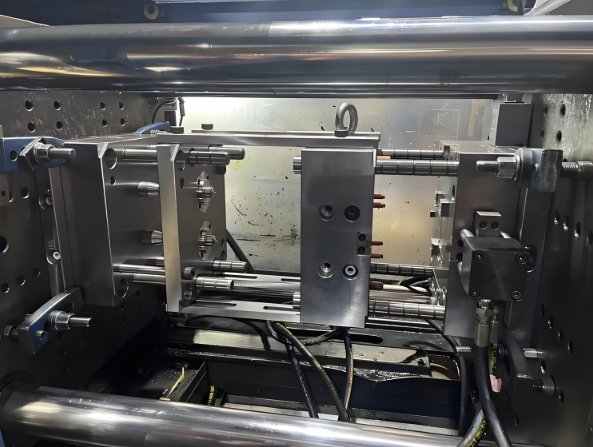
Choosing between offshore and domestic medical injection molding is a crucial decision. It affects cost, quality, production speed, and regulatory compliance. A reliable mold maker must consider supply chain stability, logistics, and risk management. Understanding the pros and cons of each option helps manufacturers make informed decisions.
1. What is Medical Injection Molding?
1.1 Definition
Medical injection molding produces precision plastic components for medical devices. These parts require strict tolerances, high quality, and regulatory compliance.
1.2 The Role of Mold Makers
A mold maker designs and builds the molds used in the injection molding process. The quality of the mold directly impacts the final product. Choosing the right supplier, whether offshore or domestic, is essential for success.
2. Offshore Medical Injection Molding
2.1 What is Offshore Manufacturing?
Offshore manufacturing involves outsourcing production to another country. Many companies choose China, India, and Mexico for lower costs and large-scale production capabilities.
2.2 Advantages of Offshore Medical Injection Molding
2.2.1 Lower Production Costs
- Labor costs are significantly lower than in Western countries.
- Reduced expenses for facility operations and utilities.
- Large-scale production allows for bulk cost savings.
2.2.2 Access to High-Volume Production
- Offshore facilities specialize in mass production.
- Many manufacturers have fully automated production lines.
- Faster scalability for large orders.
2.2.3 Advanced Manufacturing Capabilities
- Many offshore mold makers invest in the latest injection molding technologies.
- Some companies offer AI-driven quality control and automation.
2.2.4 Strong Global Supply Chains
- Many offshore manufacturers have established logistics networks.
- Access to a wide range of raw materials.
2.3 Disadvantages of Offshore Medical Injection Molding
2.3.1 Longer Lead Times
- Shipping products internationally takes time.
- Customs clearance can cause delays.
2.3.2 Quality Control Risks
- Some offshore suppliers may cut corners.
- Strict quality monitoring is necessary to ensure FDA compliance.
2.3.3 Communication Barriers
- Time zone differences slow down response times.
- Language barriers may lead to miscommunication.
2.3.4 Intellectual Property Concerns
- Risk of IP theft in some offshore markets.
- Strong legal contracts and patents are necessary.
3. Domestic Medical Injection Molding
3.1 What is Domestic Manufacturing?
Domestic manufacturing keeps medical injection molding within the home country, such as the U.S. or Europe.
3.2 Advantages of Domestic Medical Injection Molding
3.2.1 High-Quality Standards
- Domestic manufacturers follow strict FDA and ISO regulations.
- More control over quality assurance and material selection.
3.2.2 Faster Lead Times
- No international shipping delays.
- Products reach customers faster.
3.2.3 Strong Intellectual Property Protection
- Better legal enforcement of patents and trade secrets.
- Reduced risk of counterfeit medical components.
3.2.4 Easier Communication
- No time zone or language barriers.
- Faster responses to design changes and production issues.
3.3 Disadvantages of Domestic Medical Injection Molding
3.3.1 Higher Costs
- Labor costs are significantly higher than offshore options.
- Facility and regulatory compliance costs add to expenses.
3.3.2 Limited Production Capacity
- Domestic manufacturers may struggle with large-scale production.
- Higher costs may limit high-volume projects.
3.3.3 Fewer Material Suppliers
- Fewer domestic suppliers for specialized medical-grade plastics.
- Higher costs for raw materials.
4. Cost Comparison: Offshore vs. Domestic
4.1 Labor Costs
- Offshore: Lower wages reduce overall expenses.
- Domestic: Higher wages increase manufacturing costs.
4.2 Production Costs
- Offshore: Bulk production lowers per-unit cost.
- Domestic: Small-batch production may be more expensive.
4.3 Shipping Costs
- Offshore: High shipping fees and import taxes.
- Domestic: Lower transport costs with local delivery.
4.4 Hidden Costs
- Offshore: Possible quality control issues requiring rework.
- Domestic: Higher energy and compliance costs.
5. Quality and Regulatory Compliance
5.1 FDA and ISO Standards
- Domestic: Strict compliance with medical industry regulations.
- Offshore: Some suppliers may not meet full regulatory standards.
5.2 Risk of Recalls
- Offshore: Greater risk of inconsistent quality leading to recalls.
- Domestic: Higher quality reduces recall risks.
5.3 Inspection and Testing
- Domestic: Easier to monitor and inspect in person.
- Offshore: Requires third-party inspections for compliance.
6. Supply Chain and Logistics
6.1 Shipping Time
- Offshore: Takes weeks to ship internationally.
- Domestic: Faster delivery, reducing inventory costs.
6.2 Supply Chain Disruptions
- Offshore: More vulnerable to global crises and port delays.
- Domestic: More stable supply chain with fewer disruptions.
7. Making the Right Choice for Your Business
7.1 When to Choose Offshore Medical Injection Molding
- If cost savings are the top priority.
- If your company needs high-volume production.
- If you have strong quality control measures in place.
7.2 When to Choose Domestic Medical Injection Molding
- If quality and regulatory compliance are critical.
- If fast delivery is required.
- If protecting intellectual property is a top concern.
8. Future Trends in Medical Injection Molding Outsourcing
8.1 Rise of Nearshoring
- Companies moving production to Mexico, Canada, or Eastern Europe.
- Balances cost savings with faster delivery times.
8.2 Smart Factories and Automation
- AI-driven quality control will improve offshore and domestic production.
- Fully automated medical injection molding plants will increase efficiency.
8.3 Sustainability and Green Manufacturing
- Demand for recyclable medical plastics is increasing.
- Energy-efficient production methods will lower costs.
8.4 Blockchain for Supply Chain Transparency
- Blockchain will track raw materials and ensure compliance.
- Reduces the risk of counterfeit medical components.
The choice between offshore and domestic medical injection molding depends on business priorities. Offshore production offers cost savings and scalability, while domestic manufacturing ensures quality, compliance, and faster lead times. A strong mold maker must consider regulatory requirements, supply chain stability, and production needs before making a final decision.
